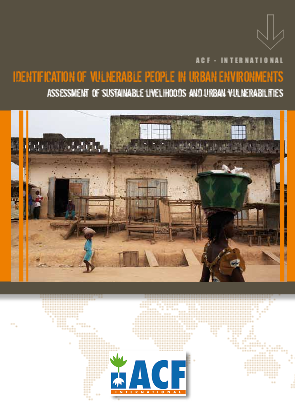
This methodological guide is designed for use by field practitioners, and was conceived in response to several problems: proliferation of food crises in urban environments; difficulty targeting the most vulnerable population among all those affected by urban poverty; breakdown of social structures; and official betrayal or non recognition of disaffected neighbourhoods. Although it focuses on cities and urban agglomerations in developing countries where life is precarious and the population is divided between individualism and communitarianism, the guide is designed for urban settings in general.
When and how to use the guidelines: These guidelines combine information on methodology as well as several tools of analysis, which are located mostly in the appendices. These tools can be used at different times to organise second-hand documents; to create a vulnerability and/or livelihood mapping across the conurbation (a region combining several cities, towns, or other urban areas that, through growth, have merged to form one continuous urban area); or to complete a low-level analysis in one or several districts.
Limitations: This guide cannot comprehensively address the diversity of urban contexts and humanitarian situations. It is only a first version that will be tested and validated during field work by practitioners from diverse backgrounds. Do not hesitate to provide any suggestions or recommendations you may have.
Resource collections
- Accountability to affected populations (AAP)
- Evaluating humanitarian action
- Topics
- UN Habitat - Urban Response Collection
- Urban Response - Urban Crisis Preparedness and Risk Reduction
- Urban Response Collection - Community Engagement and Social Cohesion
- Urban Response Collection - Economic Recovery
- Urban Response Collection - Environment and Climate Change
- Urban Response Collection - Housing, Land and Property
- Urban Response Collection - Urban Crisis Response, Recovery and Reconstruction
- Urban Response Collection - Urban Resilience
